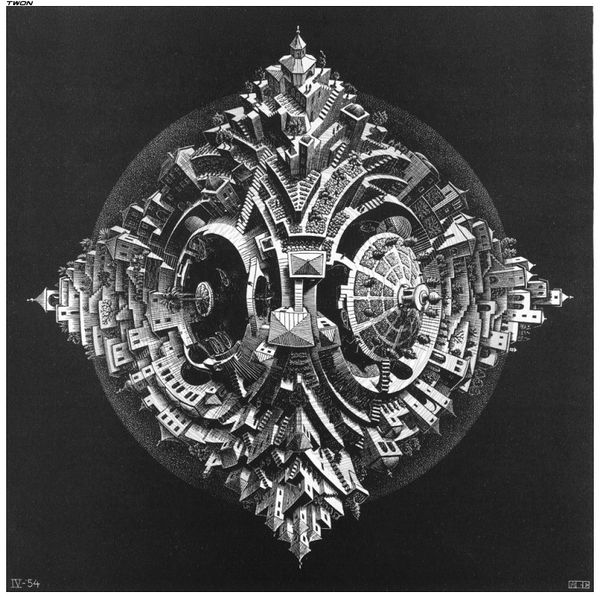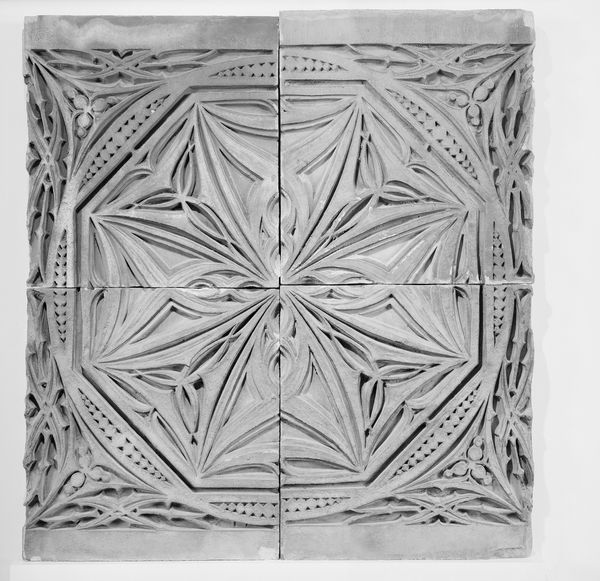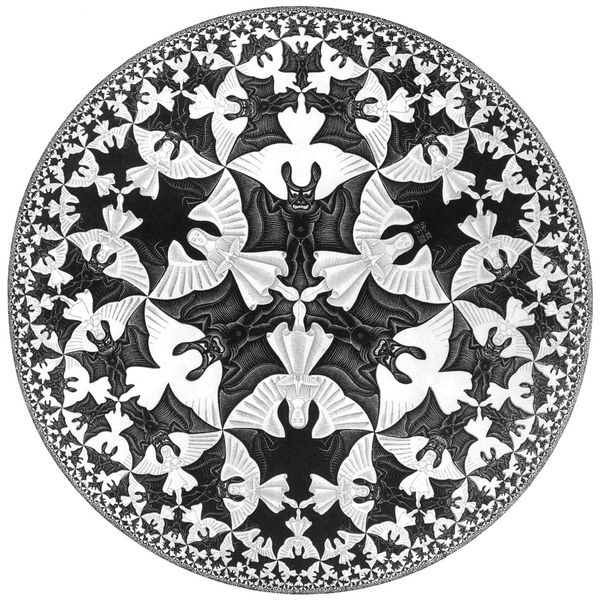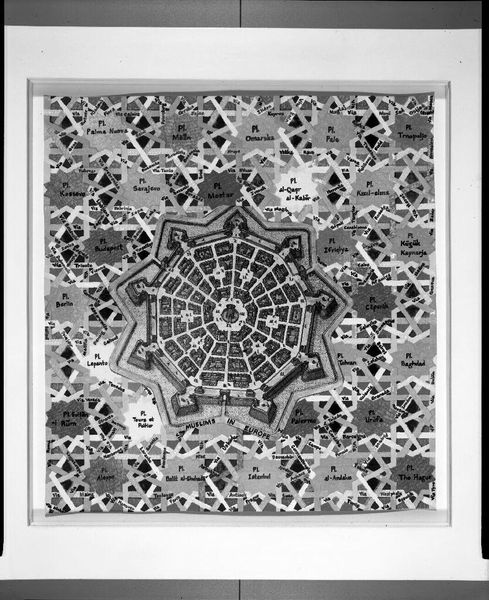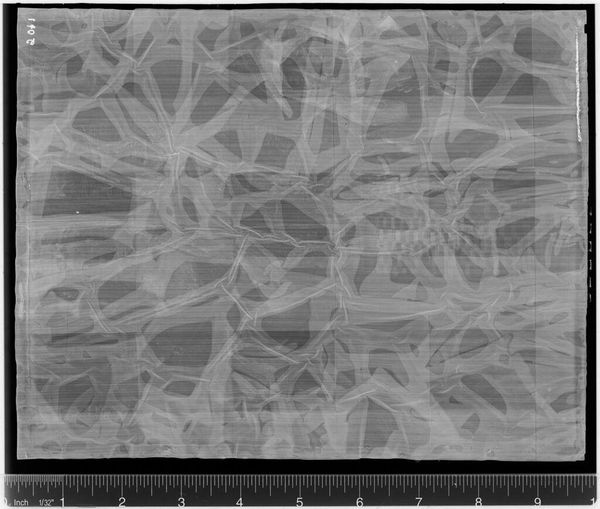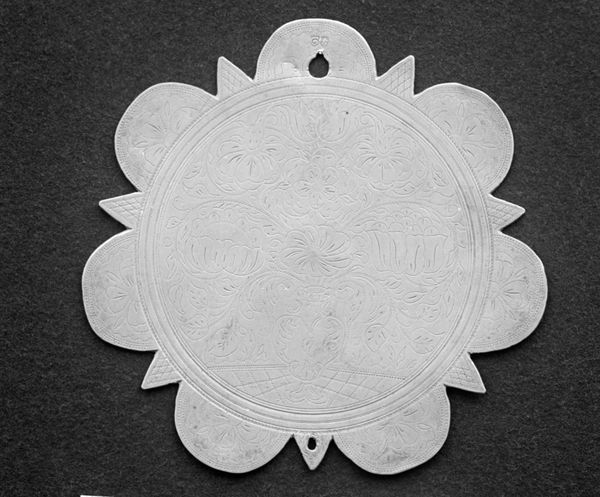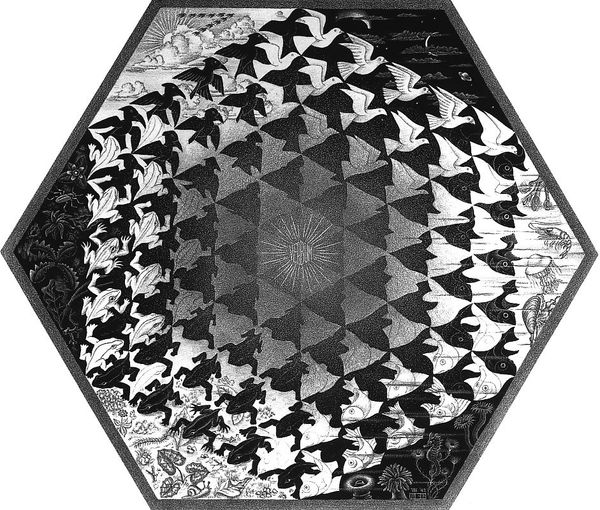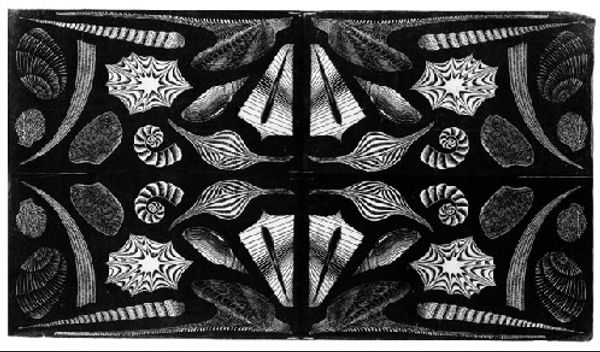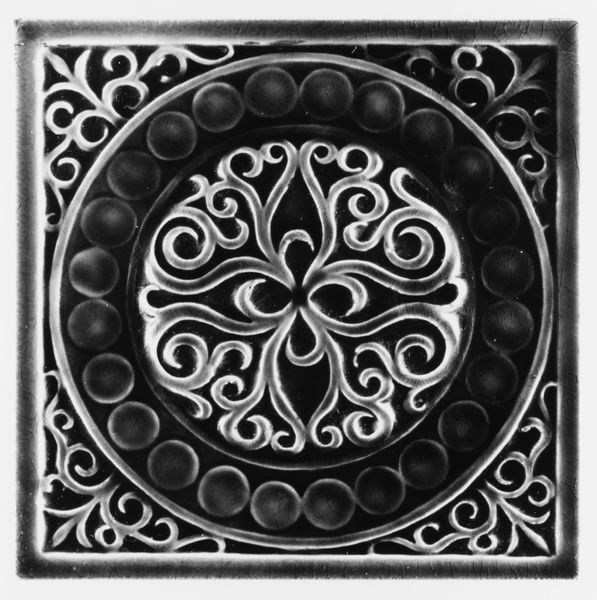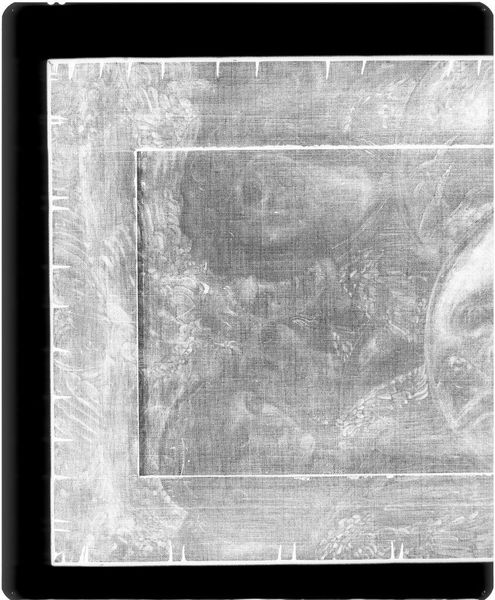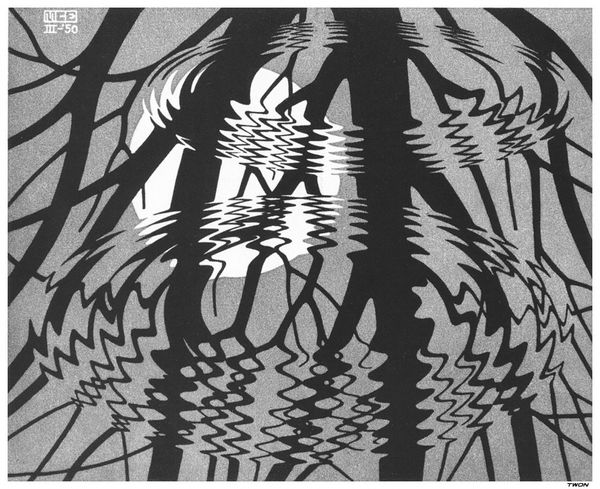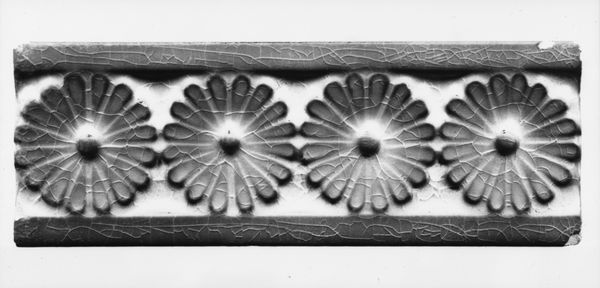
Schiller Building (later Garrick Theater): Sections of Star-Pod Design from Proscenium Vault c. 1891 - 1892
0:00
0:00
relief, architecture
#
organic
#
detailed texture
#
pattern
#
relief
#
geometric pattern
#
abstract pattern
#
organic pattern
#
geometric
#
pattern repetition
#
architecture
Dimensions: 70 × 70 cm
Copyright: Public Domain
Curator: Looking at this relief, "Schiller Building (later Garrick Theater): Sections of Star-Pod Design from Proscenium Vault", circa 1891-1892, by Louis Sullivan, what strikes you first? Editor: The sheer density of the material! It seems so solid, yet simultaneously porous. I’m immediately drawn to consider the labour and skill involved in producing something so intricately patterned from what appears to be plaster. Curator: It's classic Sullivan, where ornament speaks. He uses this star motif consistently—a sunburst of American progress, radiating energy. It's about the building breathing, each part vital. Editor: Indeed, it makes you consider architecture not as mere shelter, but as a constructed landscape, wrought by the hands of its makers. What material stories could this reveal if we examined its making closely? It’s not just "plaster;" it’s plaster mixed, molded, installed. And then the building itself…demolished, these pieces rescued. There's a material history here. Curator: Absolutely. The star radiates outward into vegetal forms. It’s that tension that grabs me; a rigid geometric order wrestling with natural, almost chaotic growth. It's very much in line with the artistic symbolisms in America around the turn of the century—industry versus nature and even divinity versus nature, all battling for artistic relevance. Editor: I agree. Considering the performative aspect of the theater setting adds layers too; this ornament wasn't just decoration. It was meant to impress, to convey prestige, reflecting both artistic ideals, and economic status through conspicuous craftmanship and display of skill and material control. Curator: The ornament’s message, like any architectural symbol, shifts depending on the viewer’s lens. It serves not as a time capsule but a record of past aspirations, open to interpretation. Editor: So, in its fragmented state, separated from the theater, and now as an exhibition artefact, it provokes contemplation not only of craftsmanship but how culture creates meanings out of matter.
Comments
No comments
Be the first to comment and join the conversation on the ultimate creative platform.
